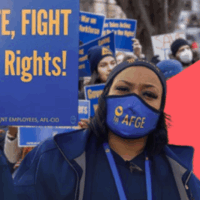Close to 400,000 Washington Workers to Get New or Strengthened Overtime Protections
Olympia, WA—Washington State Gov. Jay Inslee’s Department of Labor and Industries today acted to restore overtime pay for salaried moderate-income and middle-class workers. Under the final Washington State overtime rule announced today, the salary threshold beneath which salaried workers are guaranteed overtime pay would be gradually phased up to 2.5 times the state minimum wage by 2028—a level equal to $70,200 in 2020 dollars.
By contrast, the Trump Administration’s U.S. Department of Labor rolled back an Obama-era overtime pay update and replaced it with a meager rule that guarantees overtime pay only to workers earning up to $35,000 a year.
National workers’ rights and progressive policy groups praised the Washington State action:
Rebecca Smith, Work Structures Director, National Employment Law Project:
“Washington State under Gov. Inslee is leading the way in protecting middle-class workers from the Trump Administration’s attack on overtime pay. Washington’s action should be the model for other governors, since it would actually restore overtime and work-life balance to many of the salaried workers who used to enjoy it during the decades of post-war prosperity.”
Heidi Shierholz, Director of Policy, Economic Policy Institute:
“The Economic Policy Institute applauds Gov. Inslee in standing up for Washington’s workers and protecting Washington’s middle class from the Trump Administration’s harmful overtime pay proposal by setting an overtime threshold that will provide close to 400,000 Washington workers with new or strengthened overtime pay protections.”
Sam Berger, Vice President for Democracy and Government Reform, Center for American Progress:
“Recognizing the problems caused by stagnating wages, Gov. Inslee is taking a giant step forward to protect the middle class. While the Trump administration continues to stack the deck against hardworking Americans, Washington State is charting a better path based on a simple idea: people should be paid for the hours they work. It’s past time for elected officials to put the concerns of everyday Americans before those of political donors and powerful special interests.”
Marilyn Watkins, Policy Director for the Economic Opportunity Institute:
“Overtime pay protects both the incomes and the time of salaried employees. Importantly, these same employees will now also be covered by Washington’s paid sick and safe leave law and other protections. The Department of Labor and Industries gathered extensive input from across the state, including many workers now toiling long hours and yet not making a living wage, in setting these new standards.”
In addition to Washington State, California and New York have already acted to restore overtime pay protections, and Pennsylvania, Colorado, Michigan, Maine, and Massachusetts are proposing to do so.
Background
Since the 1970s, the salary threshold for being an overtime-exempt “white collar” worker has steadily eroded, causing the share of full-time salaried workers guaranteed overtime to plummet from 63% in the 1970s to less than 7% today. As a result, salaried employees like assistant managers at fast-food chains or retail stores are currently denied overtime protections even when they spend over 90% of their time performing the same tasks as the overtime-eligible employees they supervise. They can be made to work 50, 60, or even 70 hours a week, missing time with their families and receiving no extra pay for putting in long hours.
In 2016, the U.S. Department of Labor under President Obama sought to tackle this problem by raising the overtime salary threshold. However, the Trump Administration abandoned the Obama overtime rule and in 2019 replaced it with a weak substitute rule that slashes the guaranteed overtime salary level to $35,000.
While the Washington State rule will be the nation’s strongest, compared to decades past, it would simply begin to restore overtime pay to the share of the full-time salaried workforce that used to enjoy it. During the 1970s, the overtime threshold was at a level that guaranteed approximately 63% of the U.S. full-time salaried workforce overtime pay. The Washington State proposal would raise the threshold to cover roughly 44% of the full-time salaried workforce in the state, according to estimates by the Economic Policy Institute.
Similarly, the federal overtime salary threshold was historically between at least 3 times the federal minimum wage, and often substantially more. The Washington proposal would raise the state standard to 2.5 times the state minimum wage, bringing it more in line with past standards.
For more information, see this overview of federal and state laws and proposals around overtime pay.
###
The National Employment Law Project is a non-partisan, not-for-profit organization that conducts research and advocates on issues affecting low-wage and unemployed workers. For more about NELP, visit www.nelp.org. Follow NELP on Twitter at @NelpNews.
The Economic Policy Institute (EPI) is a nonprofit, nonpartisan think tank created in 1986 to include the needs of low- and middle-income workers in economic policy discussions. For more about EPI, visit www.epi.org.
The Center for American Progress is an independent nonpartisan policy institute that is dedicated to improving the lives of all Americans, through bold, progressive ideas, as well as strong leadership and concerted action. For more about CAP, visit www.americanprogress.org.



